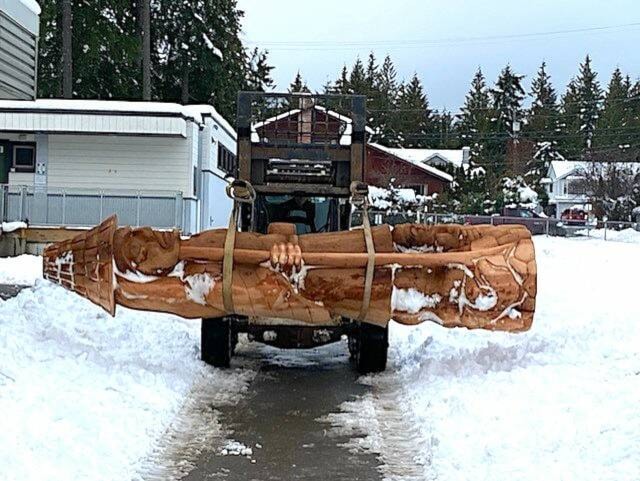Students at Cumberland Community School have an opportunity to learn of home, homelands and the beauty of Indigenous culture. The welcome poles carved by Junior Henderson and Karver Everson as part of the Dawn to Dawn (D2D) and CV Transition Society K’wax Dzi Dsas Cumberland Affordable Housing Project were moved into the school gym Thursday. Karver and Junior will complete the poles at the school while engaging the students.
“For me this is what it is all about,” said Henderson of the Weiwaikum Band of the Kwakwaka’wakw Nation. “Sharing the traditions and beauty of our culture with young people is a narrative they don’t get to hear enough of. Too often it is the negative things.”
Moving the poles from their outdoor worksite at K’wax Dzi Dsas to the school involved intricate logistics. D2D is grateful to Cumberland Earthworks for their help.
The carvers will be at the school for close to a month. During that time, Henderson and Everson will share with students the story behind the pole. Hopefully, several Elders will also speak to students of what it is to be Indigenous and their love of culture.
The poles represent the next stage in ongoing D2D indigenization workshops. These are a potent reminder of the meaning of home and on who’s home we are on.
“The population of Vancouver Island is five per cent Indigenous yet 40 per cent of the unhoused population identifies as Indigenous. How can this be?” said Grant Shilling, D2D community facilitator. “At D2D we see homelessness as a social justice issue where the underlying causes of homelessness need to be addressed. In all of our housing programs, we seek to house a minimum of 40 per cent Indigenous identified people.”
